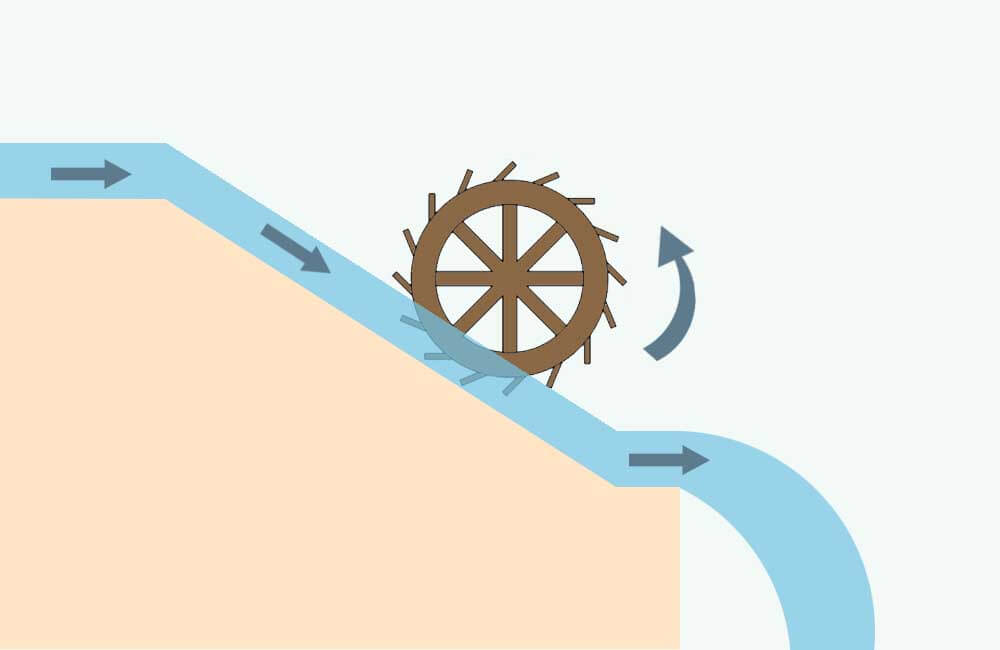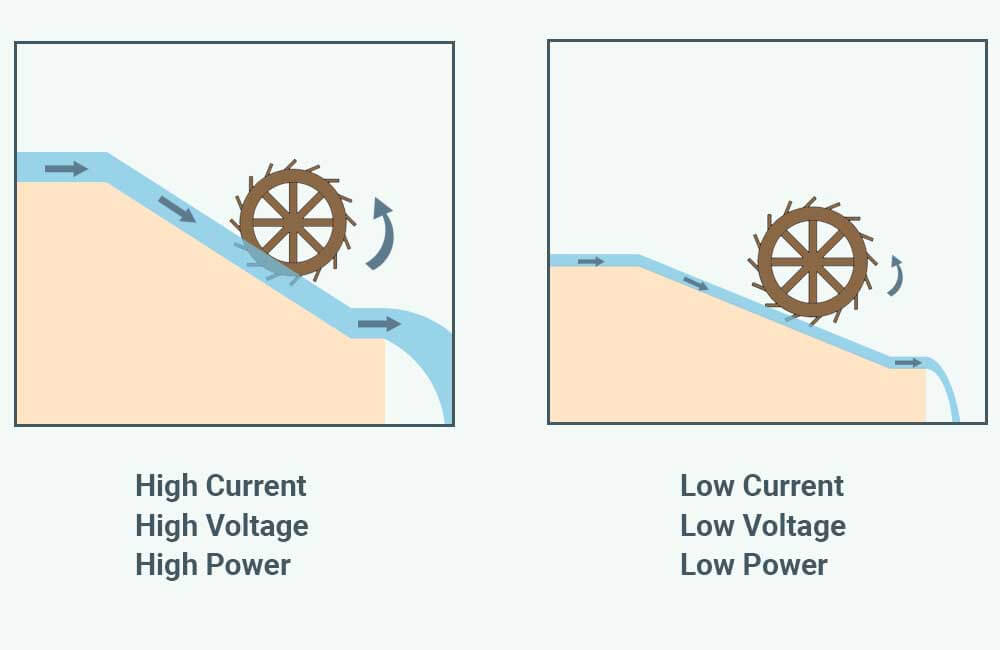When you look at your utility bill, your electricity usage is measured in kWh, which stands for kiloWatt-hours (1000 Watt-hours) and is what your utility company charges you for at the end of the month.
However, when you look at the electrical specifications of an appliance, a solar panel, or a battery, you see things like:
- Volts
- Amps
- And Watts
All of these are measurement units that measure different aspects of electricity, and in the context of solar power, the electricity usage of appliances, and battery storage capacity, it is important to know these units.
After reading this article, you’ll have a basic understanding of these electricity measuring units, what each of them represents, what the difference between them is, what the relationship between them is, and how to use them to quantify electricity.
What is electricity?
Electricity is a form of energy that results from the movement of electrons, which are tiny charged particles that exist everywhere in nature. The electricity that we use every day, is simply the product of us manipulating those electrons and causing them to move through a circuit.
For example, if you cause enough electrons to move through the thin wire filament in an incandescent light bulb, the electric charge carried by these electrons will cause the thin wire to heat up, which in turn causes it to emit light.
In other words, the heat and light produced by a light bulb, are just the byproduct of electrons passing through the thin wire filament in the light bulb.
Now, let’s talk about measurement units and the different aspects of electricity that they measure.
What are Amps?
Amperes, or Amps for short, are the unit of measurement for ‘Electric Current”, which is often symbolized by the letter “I” and represents the movement of electrons through a circuit. The more electrons per unit of time you got moving through a circuit, the higher the current.
For instance, 1 Amp of current equates to about 6,250,000,000,000,000,000 electrons moving through the circuit per second, and 2 Amps of current are equivalent to about 12,500,000,000,000,000,000 electrons moving through the circuit per second.
But how do you cause these electrons to move in the first place?
Well, the answer is Voltage.
What are Volts?
Volts are the unit of measurement for “Electric Potential Difference” or simply “Voltage”, often symbolized by the letter “V”. Voltage represents the force imposed to make electrons move through the circuit.
Without getting too deep in the weeds, Voltage can be thought of as the difference in electron concentration between two points in a circuit.
The point in the circuit with the highest electron concentration has high electric potential, and the point in the circuit with the lowest electron concentration has low electric potential, hence the term “Electric Potential Difference”.
When there is a difference in electric potential between two points in a circuit, electrons are in an unbalanced state. If a path is provided, such as the thin wire in a light bulb, for example, electrons will travel from the point of high potential toward the point of low potential, trying to achieve a state of equilibrium.
When you combine both Amps and Volts, you get Watts, which is an even more important electrical measurement unit.
What are Watts?
Watts are the unit of measurement for “Electrical Power” or simply “Wattage”, often symbolized by the letter “P”. Power, represents the rate at which energy is being transferred.
As mentioned above, Power is the product of both Current and Voltage. Mathematically, Power can be determined by multiplying the Current by the Voltage:
Power = Current x Voltage
Watts = Amps x Volts
For example, if a light bulb requires 12 Volts of Voltage, and uses 5 Amps of current, its power usage could be calculated as such:
Power (in Watts) = Current (in Amps) x Voltage (in Volts)
Power (in Watts) = 5 Amps x 12 Volts
Power (in Watts) = 60 Watts
A good way to visualize Current, Voltage, and Power, and the relationship between them, is to imagine water flowing down an inclined surface.
Let’s also imagine that we place a wheel in the way of the flowing water, with the objective of spinning the wheel as many times as possible:

In this analogy:
- The quantity of water flowing down the sloped surface represents the Current (Amps).
- The inclination of the surface represents the Voltage (Volts).
- And the speed at which the wheel is spinning represents the Power (Watts).
- The wheel itself could be thought of as an appliance.

If you increase the inclination of the surface and also increase the amount of water flowing down the surface, or at least one of them, the rate at which the wheel spins will also increase.
In electricity, if you increase the Voltage (Volts), and also increase the Current (Amps), or at least one of them, Power (Watts) will also increase.
Now, for appliances in real life, Power (Watts) measures the rate at which the appliance uses electricity to perform “work”.
For some appliances, such as fans, pumps, refrigerators, air conditioners, or appliances with motors in general, to perform the “work” literally means to spin. But, for other appliances, the “work” could be:
- Generating a certain amount of light (light bulbs)
- Heating a certain amount of air (Space heaters or heat pumps)
- Heating a certain amount of water (Water heaters)
- etc…
Now that we’ve discussed Power, which measured the rate at which electricity is transferred, let’s discuss a unit that measures the quantity of electricity.
What are Watt-hours?
Watt-hours (Wh) are the unit for measuring “Electrical Energy”, which represents the quantity of electricity stored, consumed, produced, or in general, transferred, over a certain period of time.
A more common unit for measuring Energy is kWh, which you typically see in a utility bill and which stands for kiloWatt-hours. A kWh is simply 1000 Watt-hours (1 kWh = 1000 Wh).
The relationship between Power and Energy can be expressed through the following formula:
Energy = Power x Time
Watt-hours (Wh) = Watt x hours
For instance, consider your typical 60W light bulb.
The 60W rating on the light bulb stands for 60 Watts, and it represents the rate at which the light bulb consumes electricity.
If, for example, our 60W light bulb stays on for 5 hours, the amount of electricity that it would have consumed by the end of those 5 hours can be calculated as such:
Energy Consumption (in Watt-hours) = Power Usage (in Watts) x Usage Duration (in hours)
Energy Consumption (in Watt-hours) = 60 Watts x 5 hours
Energy Consumption (in Watt-hours) = 300 Watt-hours
300 Watt-hours (Wh) is equivalent to 0.3 kiloWatt-hours (kWh).
Related: Calculate the energy consumption of your appliances


Good. How come I didn’t learn this in grade school?